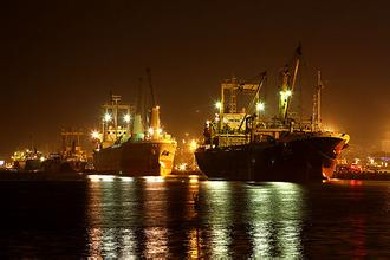Rail freight is popular in multimodal transport and transhipment. It is widely used in landbridges.
Rail cars--- rail wagons---are available in configurations to accommodate many kinds of cargo. Flat cars---flatbed rail cars---can be 40' to 89' long and can run at 120 kms. per hour. Some rail cars are specially designed to carry road trailers in a road-rail service or TOFC (trailer on flat car) service, which is often referred to as the piggyback.
In a COFC (container on flat car) service, for example using 50 flat cars each with a 60-ton capacity, the combined flat cars may carry loads weighing up to 3,000 metric tons, which is far more than a truck or an airplane can carry. Hence, rail freight is very popular in the movement of ocean freight containers and in the transport of bulk cargo in long distance land travel, such as land travel between the East and West Coast ports in U.S.A. and/or Canada. The U.S.A., Canada and other countries have a double-stack train system that moves more freight. The 80' and longer container flat cars may carry 8 TEUs (twenty-foot equivalent units) when the ocean containers are double stacked.
Large shippers, who have rail sidings at their facility, may arrange directly with the rail carrier to have the rail cars moved to their facility for loading. The rail carrier will pick up the rail cars at a specified time and move them to the port of export for loading on the vessel. There is also an overtime use charge, as in the use of ocean freight containers, also known as demurrage, that is collected on overstayed rail cars.
Rail carriers issue a rail waybill, also known as a rail consignment note.
CL versus LCL
The word carload relates to the rail car. CL (carload) or FCL (full carload) means a full rail car, while LCL (less than carload; loose carload) means not a full rail car.








